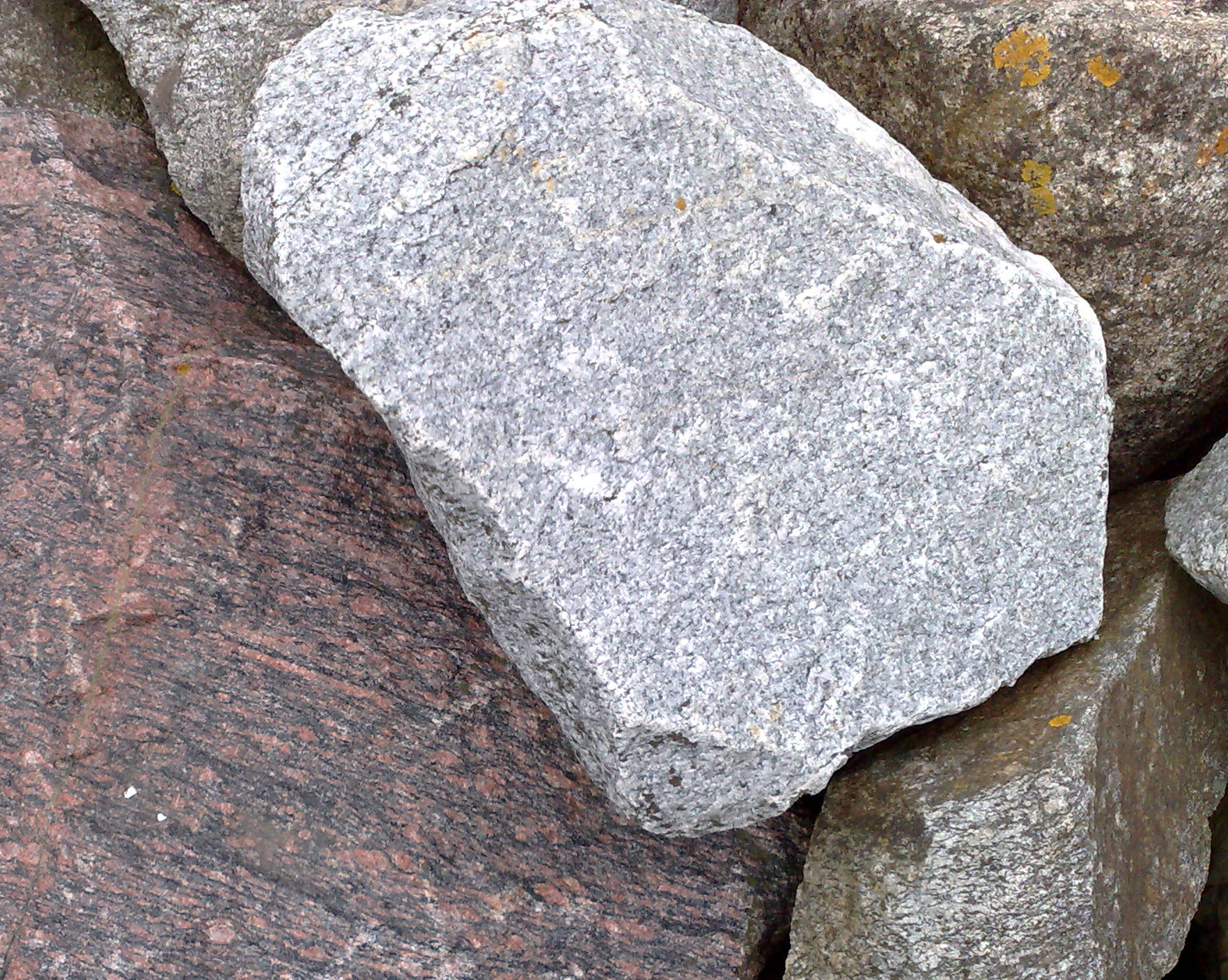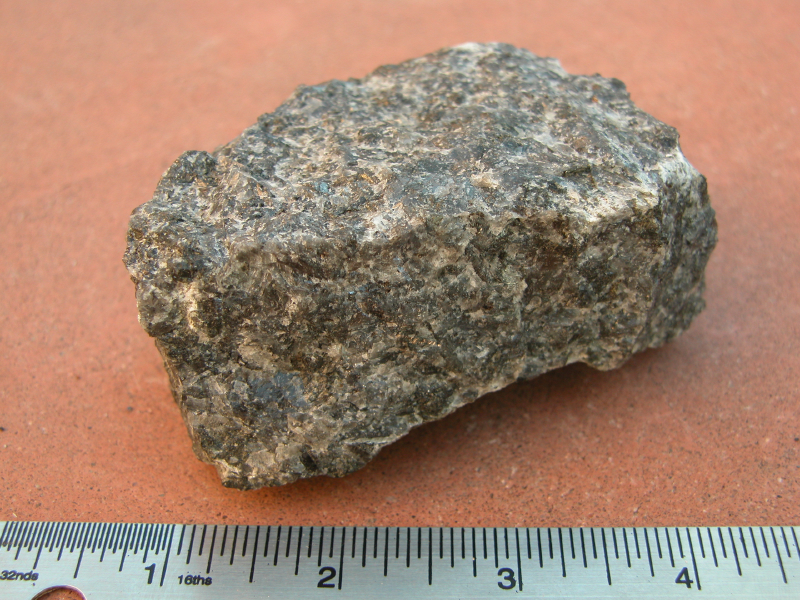|
Stocks (geology)
In geology, a stock is an igneous intrusion that has a surface exposure of less than ,Whittow, John (1984). ''Dictionary of Physical Geography''. London: Penguin, 1984, p. 513. . differing from batholiths only in being smaller. A stock has a discordant relationship with the rocks that it intrudes. Many stocks are cupolas of hidden batholiths. Some circular or elliptical stocks may be volcanic plugs, which fill the vents of now extinct volcanoes. A boss is a small stock. Examples * the Alta and Clayton Peak stocks (composed of granodiorite), near Park City, Utah * the Hellroaring Creek and Salal Creek stocks (of granite-granodiorite and quartz monzonite, respectively) in British Columbia, Canada * the Céret stock (of gabbro and diorite) in Pyrénées-Orientales, France * the Parashi stock (of tonalite) in La Guajira Department, Colombia * stocks of syenite in the Caldera de Tejeda on Gran Canaria * Ailsa Craig Ailsa Craig (; ) is an island of in the outer Firth of Clyde, ... [...More Info...] [...Related Items...] OR: [Wikipedia] [Google] [Baidu] |
Granite
Granite ( ) is a coarse-grained (phanerite, phaneritic) intrusive rock, intrusive igneous rock composed mostly of quartz, alkali feldspar, and plagioclase. It forms from magma with a high content of silica and alkali metal oxides that slowly cools and solidifies underground. It is common in the continental crust of Earth, where it is found in igneous intrusions. These range in size from dike (geology), dikes only a few centimeters across to batholiths exposed over hundreds of square kilometers. Granite is typical of a larger family of ''granitic rocks'', or ''granitoids'', that are composed mostly of coarse-grained quartz and feldspars in varying proportions. These rocks are classified by the relative percentages of quartz, alkali feldspar, and plagioclase (the QAPF diagram, QAPF classification), with true granite representing granitic rocks rich in quartz and alkali feldspar. Most granitic rocks also contain mica or amphibole minerals, though a few (known as leucogranites) conta ... [...More Info...] [...Related Items...] OR: [Wikipedia] [Google] [Baidu] |
Ailsa Craig
Ailsa Craig (; ) is an island of in the outer Firth of Clyde, west of mainland Scotland, upon which microgranite has long been quarried to make curling stones. The now-uninhabited island comprises the remains of a magmatic pluton formed during the same period of igneous activity as magmatic rocks on the nearby Isle of Arran. The island, colloquially known as " Paddy's Milestone" because it is halfway between Belfast and Glasgow, was a haven for Catholics during the Scottish Reformation in the 16th century, but is today a bird sanctuary, providing a home for huge numbers of gannets and an increasing number of puffins. Etymology The name ''Ailsa'' comes from the Gaelic ''Allasa(n)'', earlier ''Aldasain'', which is of obscure origin. It has been suggested that it represents a contraction of ''allt Shasann'', meaning "cliff of the Saxons" (cf. ''airer Saxan'', "coastland of the Saxon", a name applied to southwestern Scotland in an early Gaelic text). The "Saxons" in questio ... [...More Info...] [...Related Items...] OR: [Wikipedia] [Google] [Baidu] |
Gran Canaria
Gran Canaria (, ; ), also Grand Canary Island, is the third-largest and second-most-populous island of the Canary Islands, a Spain, Spanish archipelago off the Atlantic coast of Northwest Africa. the island had a population of that constitutes approximately 40% of the population of the archipelago. Las Palmas de Gran Canaria, the capital of the island, is the largest city of the Canary Islands and the ninth-largest of Spain. Gran Canaria is located in the Atlantic Ocean in a region known as Macaronesia about off the northwestern coast of Africa and about from Europe. With an area of and an altitude of at Morro de la Agujereada, Gran Canaria is the third largest island of the archipelago in both area and altitude. Gran Canaria is also the third most populated island in Spain. History In Classical antiquity, antiquity, Gran Canaria was populated by the North African Guanches, Canarii, who may have arrived as early as 500 BC. In the Middle Ages, medieval period, after ove ... [...More Info...] [...Related Items...] OR: [Wikipedia] [Google] [Baidu] |
Syenite
Syenite is a coarse-grained intrusive igneous rock with a general composition similar to that of granite, but deficient in quartz, which, if present at all, occurs in relatively small concentrations (< 5%). It is considered a granitoid. Some syenites contain larger proportions of components and smaller amounts of material than most granites; those are classed as being of . The |
La Guajira Department
La Guajira () is a department of Colombia. It occupies most of the Guajira Peninsula in the northeast region of the country, on the Caribbean Sea and bordering Venezuela, at the northernmost tip of South America. The capital city of the department is Riohacha. Various indigenous tribes have populated the arid plains of the region long before the Spanish expeditions reached the Americas. In 1498, Alonso de Ojeda sailed around the peninsula of La Guajira, but the first European to set foot in what is known today as La Guajira was the Spanish explorer Juan de la Cosa in 1499. During the colonial era, the territory of La Guajira was disputed by the governors of Santa Marta and Venezuela, owing to deposits of pearls. English pirates, Frenchmen, and Germans also fought for control of the territory. Martin Fernandez de Enciso founded Nuestra Señora Santa María de los Remedios del Cabo de la Vela, the first colonial village in the territory. In 1535, Nicolás de Federmán refoun ... [...More Info...] [...Related Items...] OR: [Wikipedia] [Google] [Baidu] |
Tonalite
Tonalite is an igneous rock, igneous, plutonic (Intrusive rock, intrusive) rock (geology), rock, of felsic composition, with phaneritic (coarse-grained) texture. Feldspar is present as plagioclase (typically oligoclase or andesine) with alkali feldspar making up less than 10% of the total feldspar content. Quartz (SiO2) is present as more than 20% of the total quartz-alkali feldspar-plagioclase-feldspathoid (QAPF classification, QAPF) content of the rock. Amphiboles and biotite are common in lesser quantities, while accessory minerals include apatite, magnetite and zircon. In older references tonalite is sometimes used as a synonym for quartz diorite. However the current IUGS QAPF diagram, classification defines tonalite as having greater than 20% quartz, while quartz diorite varies its quartz content from 5 to 20%. The name is derived from the type locality of tonalites, adjacent to the Tonale Line, a major structural lineament and mountain pass, Tonale Pass, in the Italy, Itali ... [...More Info...] [...Related Items...] OR: [Wikipedia] [Google] [Baidu] |
Pyrénées-Orientales
Pyrénées-Orientales (; ; ; ), also known as Northern Catalonia, is a departments of France, department of the Regions of France, region of Occitania (administrative region), Occitania, Southern France, adjacent to the northern Spain, Spanish frontier and the Mediterranean Sea. It borders the departments of Ariège (department), Ariège to the northwest and Aude to the north, the Mediterranean Sea to the east and the Spanish province of Girona in Catalonia to the south and the country of Andorra to the west. It also surrounds the tiny Spanish exclave of Llívia, and thus has two distinct borders with Spain. In 2019, it had a population of 479,979.Populations légales 2019: 66 Pyrénées-Orientales INSEE Some parts of the Pyrénées-Orientales (like the Cerdagne) are part of the I ... [...More Info...] [...Related Items...] OR: [Wikipedia] [Google] [Baidu] |
Diorite
Diorite ( ) is an intrusive rock, intrusive igneous rock formed by the slow cooling underground of magma (molten rock) that has a moderate content of silica and a relatively low content of alkali metals. It is Intermediate composition, intermediate in composition between low-silica (mafic) gabbro and high-silica (felsic) granite. Diorite is found in mountain-building belts (''orogens'') on the margins of continents. It has the same composition as the fine-grained volcanic rock, andesite, which is also common in orogens. Diorite has been used since prehistoric times as decorative stone. It was used by the Akkadian Empire of Sargon of Akkad for funerary sculptures, and by many later civilizations for sculptures and building stone. Description Diorite is an intrusive rock, intrusive igneous rock composed principally of the silicate minerals plagioclase feldspar (typically andesine), biotite, hornblende, and sometimes pyroxene. The chemical composition of diorite is Intermedia ... [...More Info...] [...Related Items...] OR: [Wikipedia] [Google] [Baidu] |
Gabbro
Gabbro ( ) is a phaneritic (coarse-grained and magnesium- and iron-rich), mafic intrusive igneous rock formed from the slow cooling magma into a holocrystalline mass deep beneath the Earth's surface. Slow-cooling, coarse-grained gabbro is chemically equivalent to rapid-cooling, fine-grained basalt. Much of the Earth's oceanic crust is made of gabbro, formed at mid-ocean ridges. Gabbro is also found as plutons associated with continental volcanism. Due to its variant nature, the term ''gabbro'' may be applied loosely to a wide range of intrusive rocks, many of which are merely "gabbroic". By rough analogy, gabbro is to basalt as granite is to rhyolite. Etymology The term "gabbro" was used in the 1760s to name a set of rock types that were found in the ophiolites of the Apennine Mountains in Italy. It was named after Gabbro, a hamlet near Rosignano Marittimo in Tuscany. Then, in 1809, the German geologist Christian Leopold von Buch used the term more restrictively in his d ... [...More Info...] [...Related Items...] OR: [Wikipedia] [Google] [Baidu] |
Government Of British Columbia
The Government of British Columbia () is the body responsible for the administration of the Canadian province of British Columbia. The term ''Government of British Columbia'' can refer to either the collective set of all three institutions, or more specifically to the executive—ministers of the Crown (the Executive Council) of the day, and the non-political staff within each provincial department or agency, i.e. the civil services, whom the ministers direct—which corporately brands itself as the ''Government of British Columbia'', or more formally, Majesty's Government (). The current construct was established when the province joined Confederation in 1871. British Columbia is a secondary jurisdiction of Canada, a constitutional monarchy with a parliamentary democracy in the Westminster tradition; a premier—David Eby of the New Democratic Party since 2022—is the head of government and is invited by the Crown to form a government after securing the confidence of the Le ... [...More Info...] [...Related Items...] OR: [Wikipedia] [Google] [Baidu] |
British Columbia
British Columbia is the westernmost Provinces and territories of Canada, province of Canada. Situated in the Pacific Northwest between the Pacific Ocean and the Rocky Mountains, the province has a diverse geography, with rugged landscapes that include rocky coastlines, sandy beaches, forests, lakes, mountains, inland deserts and grassy plains. British Columbia borders the province of Alberta to the east; the territories of Yukon and Northwest Territories to the north; the U.S. states of Washington (state), Washington, Idaho and Montana to the south, and Alaska to the northwest. With an estimated population of over 5.7million as of 2025, it is Canada's Population of Canada by province and territory, third-most populous province. The capital of British Columbia is Victoria, British Columbia, Victoria, while the province's largest city is Vancouver. Vancouver and its suburbs together make up List of census metropolitan areas and agglomerations in Canada, the third-largest metropolit ... [...More Info...] [...Related Items...] OR: [Wikipedia] [Google] [Baidu] |







